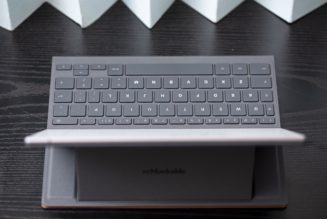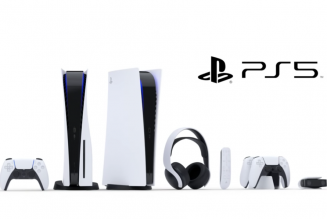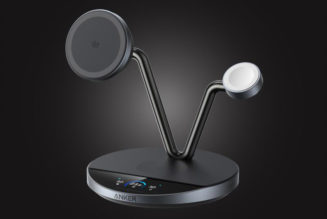It’s the ultimate big-screen gaming experience for the ultimate price.
Razer has made big laptops in the past — but they apparently weren’t big enough. The Razer Blade 18 is the biggest-screened Razer Blade ever released, and it’s hard to overstate how immersive that 18-inch, QHD, 16:10, 240Hz display is. That massive 2560 x 1600 screen is the primary draw of the device, but a few other staples of the Blade line — the six-speaker array, the per-key RGB keyboard, the best build quality you’ll find in the high-end gaming space — as well as some features coming newly to the 18, including a CPU overclocking feature, a battery health optimizer, and an absolutely massive touchpad, all make for a solid package.
While the smaller Blade 16, with its dual-mode Mini LED screen, may be a flashy and fancy reimagining of what a Razer Blade can be, the Blade 18 is a more traditional offering — Razer took the Blades we knew and loved and just kind of blew them up. While some may aspire to the ideal of a fully-specced RTX 4090 Blade 16, I think this toned-down, 2560 x 1600, RTX 4080 Blade 18 is a more pragmatic buy for high-end shoppers. It’s a whole lot cheaper, but the experience delta is not that wide.
Before I get into my results, I do need to make one caveat: Blades are more expensive than they used to be. The Blade 18 I tested was the cheaper of two currently available Blade models, and it includes a 24-core Core i9-13950HX, 32GB of DDR5 RAM, 1TB of storage, and the RTX 4080. It currently costs $3,799.99; if you think that’s expensive, don’t even click on the RTX 4090 model, which is going for $4,499.99.
For context, the most expensive QHD RTX 3070 Ti model of last year’s Blade 17 is going for $3,399.99 — a full $400 cheaper. I know that eight is technically a bigger number than seven, but that is still a comparable model to our test unit when it comes to the tiers they occupy in Razer’s lineup. If you compare the top chips on offer, Razer sold a QHD 3080 Ti Blade 17 for $3,999.99 (though this was discontinued in the U.S.), which is $500 cheaper than the 4090 Blade 18. There is not currently a Blade 18 you can get for the price of last year’s QHD 3070 Ti models.
Basically, these gaming laptops are getting better — but they’re also getting more expensive (and they have been for the past few generations).
Diving into the gaming performance, which is presumably the reason you’re here: The Blade 18 did well. At QHD resolution, it ran every game at over 60fps — even Cyberpunk 2077 with ray tracing on, which is bonkers. Peruse the provided benchmark chart at your leisure. But what kind of a performance penalty do you see when moving from the 4090 down to the 4080? The answer, as far as I can tell, is… not a big one.
On many of the games we ran, the Blade 18 got a similar (and identical, in some cases) score to the Blade 16. (Our Blade 16 unit had this same Core i9 but an RTX 4090 inside.) In cases where the 4090 machine won, the deltas were generally in single-digit percentages. That often means frame rate increases of single digits — nothing that’s going to significantly impact most people’s gameplay.
The Blade 16 is a smaller machine than the Blade 18, so things like cooling and power limits might be coming into play there. For what it’s worth, though, MSI’s Titan GT77 HX, which has an RTX 4090 and is enormous, is also only single-digit percentages ahead of the Blade 18 on many of these titles. All in all, the RTX 4080 is looking like a solidly better value than the RTX 4090 based on these results.
Oh, the Blade 18 also put up a massive 43 percent increase in Horizon Zero Dawn performance over our Blade 17 review unit from last year (which had an RTX 3080 Ti). I’m just sharing that because I found it humorous. Anyway, games looked great on this QHD+ screen, which reached 574 nits of peak brightness in testing (considerably more than the average gaming laptop) — and is also, I have to remind you, 18 inches, which is so big.

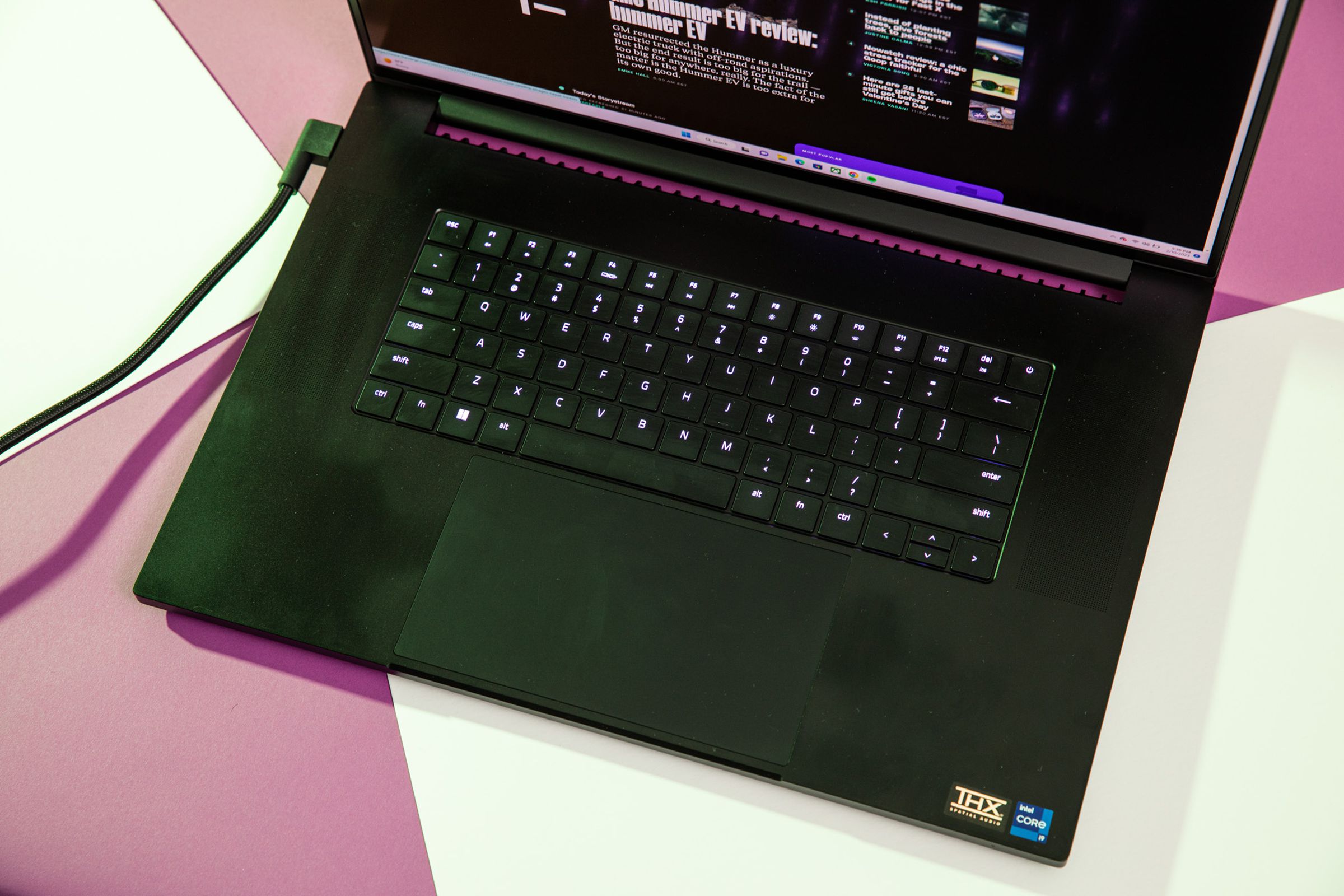
In Premiere Pro, the Blade 18 finished our 4K export test in just over two minutes. It handily bested both the Blade 16 and the Titan on PugetBench, a synthetic benchmark that tests export and playback performance at 4K and 8K, scoring a 1413. In fact, it also beat the recent M2 MacBook Pros (and that’s supposed to be like, their whole thing). I’m scratching my head a bit at this result, I’ll admit. I even ran the test multiple times to make sure I hadn’t messed something up. My best guess would be, to borrow my earlier phrasing, cooling and power limits. Anyway, the takeaway: The Blade 18 is good at Premiere.
Speaking of cooling, a pleasant surprise throughout my testing was that compared to the Blade 16, the Blade 18 is… cooler. The 18’s larger chassis, after all, doesn’t just lend itself to more pixels; it also has room for a fancier cooling system. Razer claims that this device’s cooling system is “thinner and more efficient than traditional heat pipe methods,” utilizing a vacuum-sealed copper chamber with deionized water, as well as various special materials meant to reduce hotspots. So, seems like that’s all doing something.
I wouldn’t go so far as to call it cool — it certainly gets warmish during gameplay in the hinge area — but it’s not the worrisome fireball that I’ve found other thin gaming laptops (like the Blade 16) to be. The keyboard and palm rests largely stayed comfortable. The CPU did hit 100 (Celsius) a couple of times while I played, but it was not spending nearly as much time there as the Blade 16 did, and was largely hanging out in the mid-70s to mid-80s.

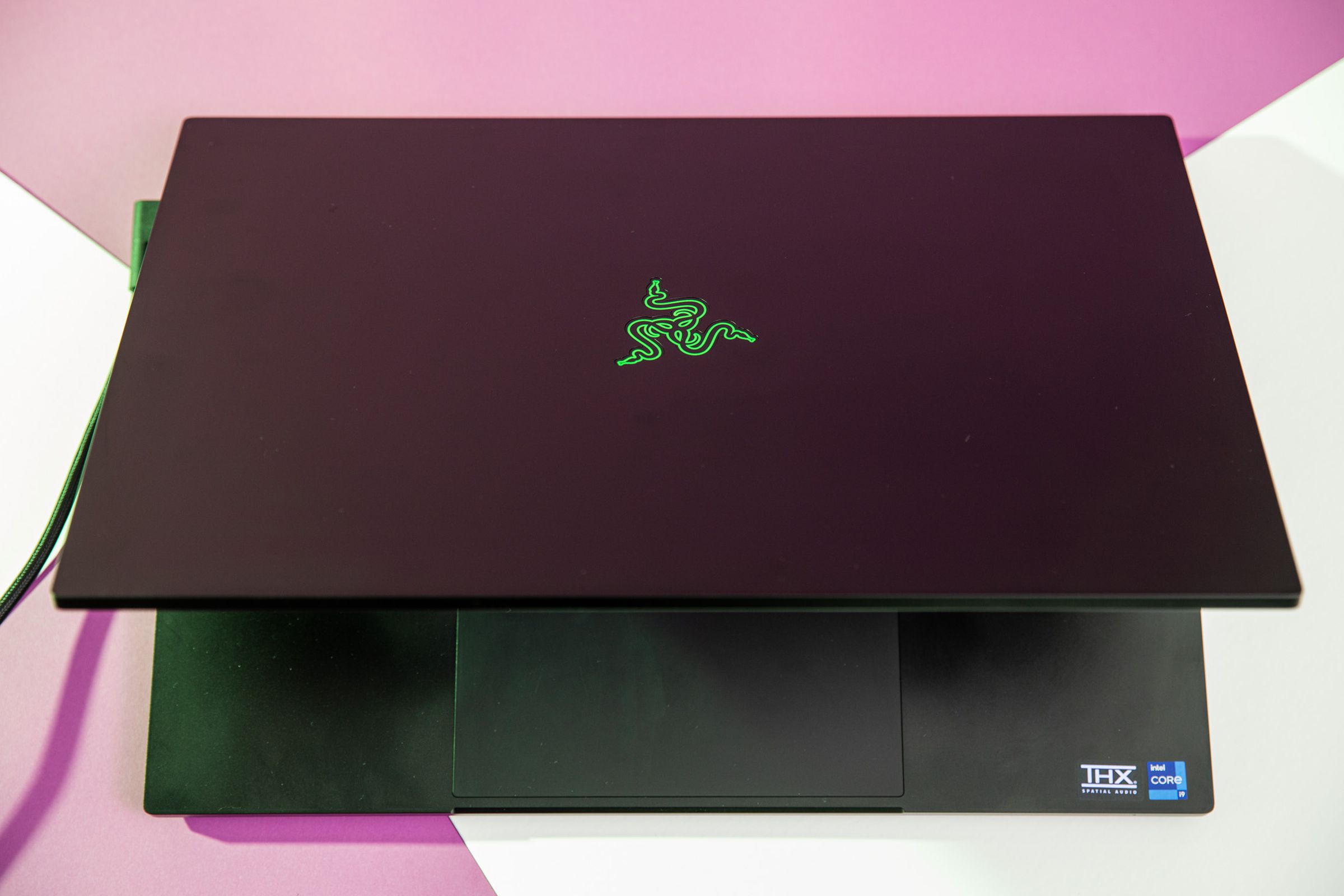
To be clear, that doesn’t mean this laptop is quiet. It’s loud. You will hear the fans going — probably from across the room if you run the device at full power as you game. If you find that too annoying, you can swap to Silent Mode in Razer’s Synapse software.

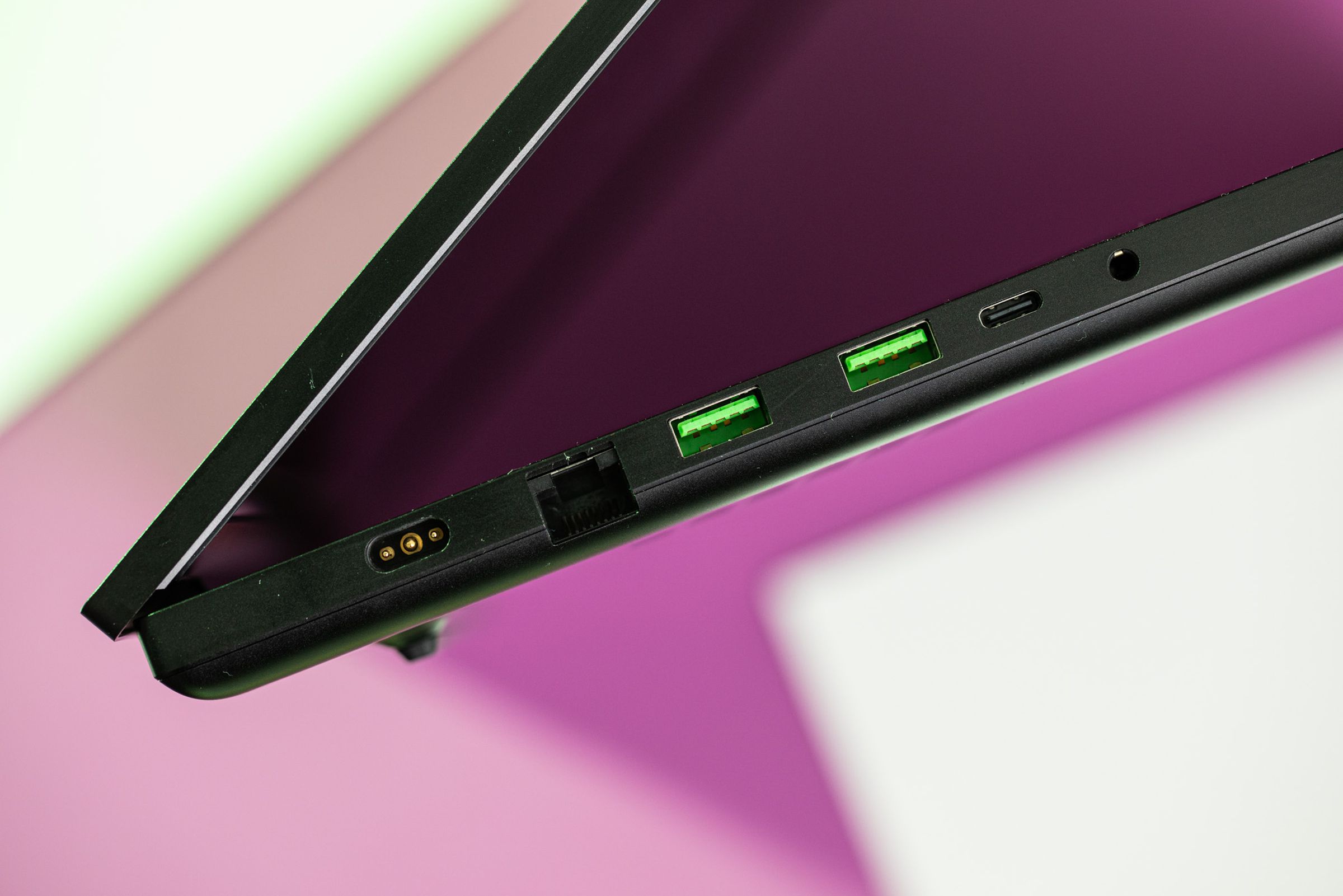

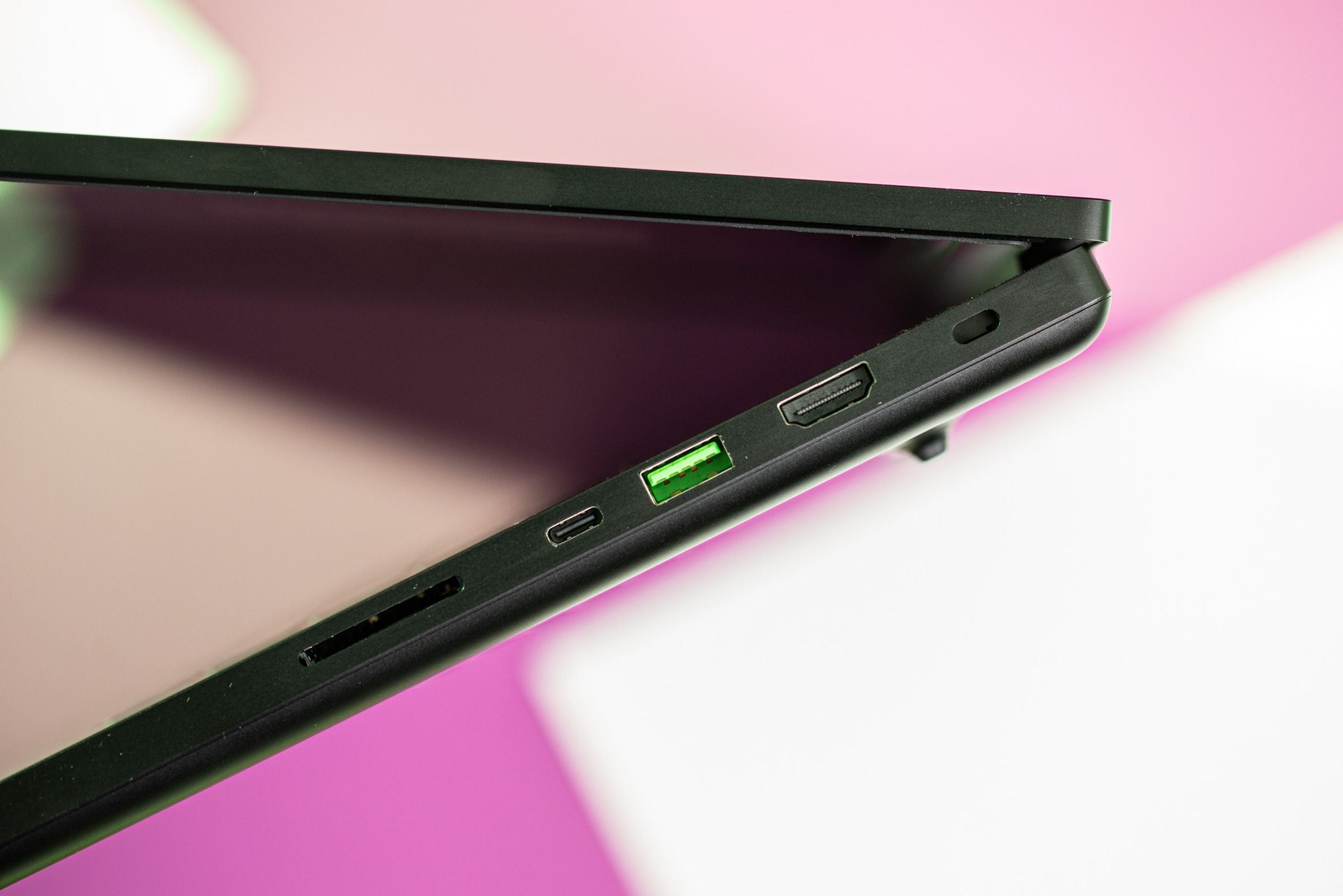
Speaking of battery life: It’s not great. I got three hours and 46 minutes out of this device, using it solely for Chrome multitasking and some streaming (with the discrete GPU off). On the one hand, it is better than what we saw from the Blade 17 last year (which makes sense since, if nothing else, the battery is bigger). And battery life isn’t as crucial on giant gaming rigs as it is in the ultraportable market.
But 3:46 is still not great, and certainly mitigates the benefit of the Blade’s relatively thin and light stature somewhat. This device, while far from tiny, is compact compared to the Titans and Strixes of the world, at 0.86 inches thick and a hair over seven pounds. You’re not likely to find much thinner or lighter in the 18-inch gaming space, and I assume that portability will be at least some part of the appeal for people who are considering the product.
While the Blade 18 is technically a new device, it’s currently the closest thing we have to a sequel to last year’s Blade 17. One of the most noticeable changes is that the touchpad has increased by 50 percent in size from the Blade 17’s touchpad. The new touchpad is 15.74 x 10.84 x 0.86 inches — it’s huge. It’s actually almost too big for me, to the point where I have to consciously reach in order to left click with my right hand. I recognize that this is mostly a me problem. As with past Blades, this trackpad has a somewhat mushy click, but is certainly responsive to gestures and quick to scroll.

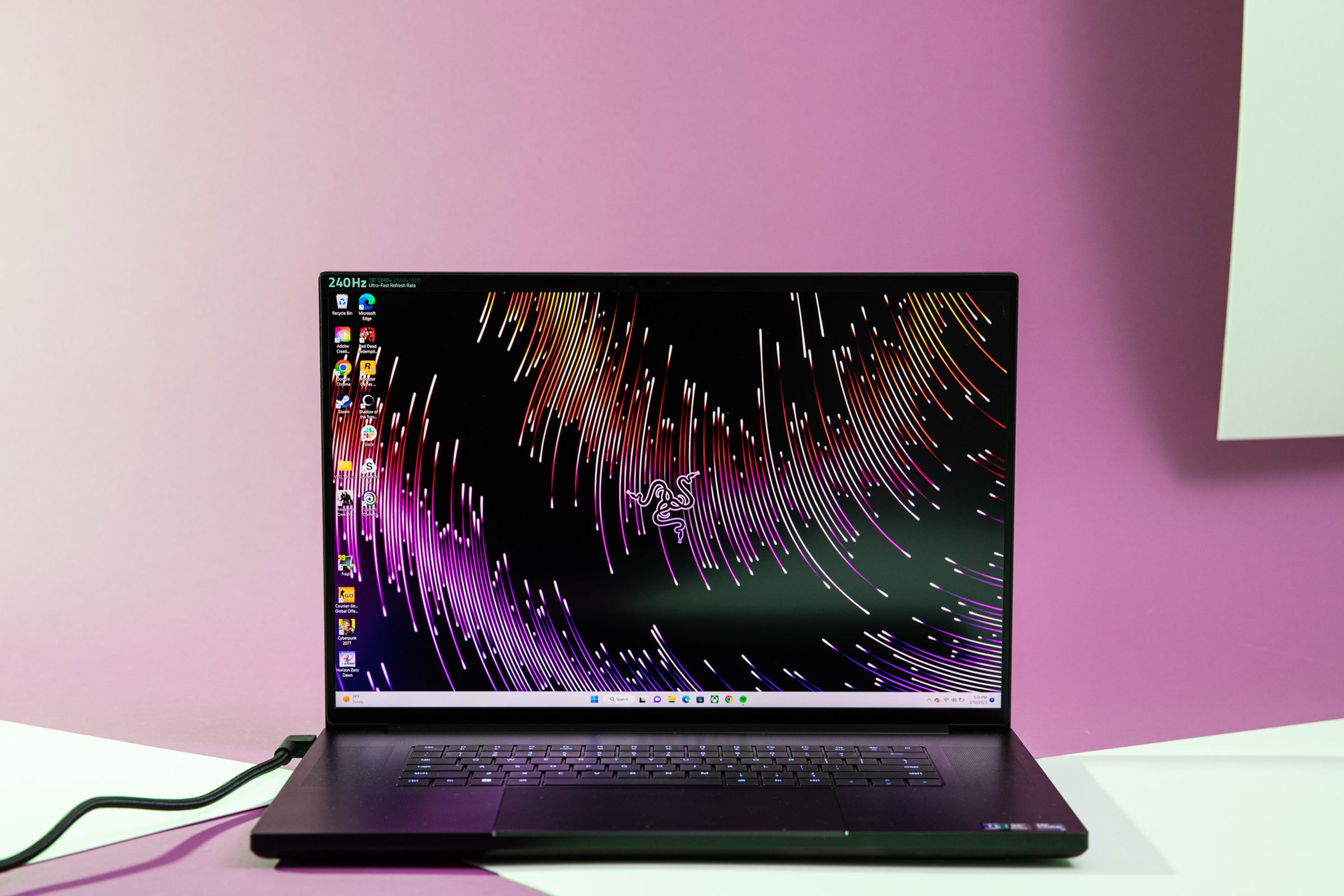
Port selection is as good as it gets: there’s a 2.5Gbps Ethernet port, in addition to the USB-C 3.2 Gen 2, Thunderbolt 4, three USB-A, HDMI 2.1, and UHS-II SD card reader. The Blade 18 can charge via USB-C (up to 100W) if you don’t feel like carrying its dedicated 330W adapter around — though it’s fairly compact as gaming laptop bricks go. And yes: I know lots of people have erased USB-A from their lives, but speaking as someone who still has old gaming peripherals that they have no desire to dispense with, those ports make my life easier.

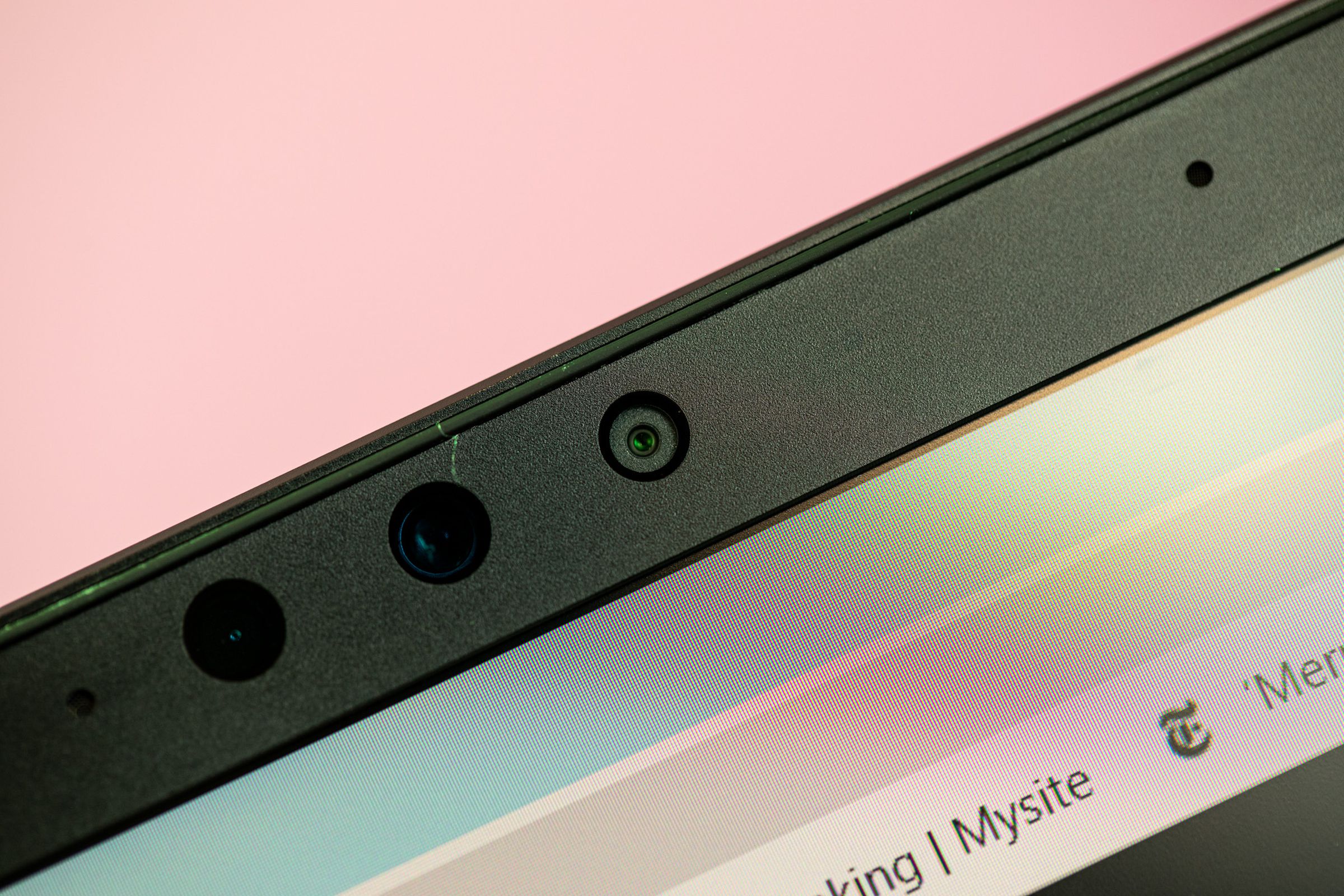
The 5MP webcam is another new feature, and it does look pretty good. It delivered a sharp, clear picture of me in a bright office setting where I look washed out on many laptop cameras. That said, it’s still a laptop webcam, and the picture remains somewhat grainy as pictures go. I’m honestly about as bummed about the lack of a physical shutter (the Blade 16 has one) as I am excited about the webcam’s quality.
Those are most of the new things, and the rest of this laptop is quite similar to big Blades past. This looks, for all intents and purposes, like a big Blade. The signature green logo is there on the lid. The black finish is smooth and a major fingerprint magnet.


It’s a bit confusing to me that Razer isn’t currently selling a 4K model of the Blade 18. It’s selling a 4K Blade 16, after all, and a bigger screen gets even more benefit from those extra pixels. But the fact that this particular unit has a QHD screen makes a great case for it. Because while it’s possible that the RTX 4090 may be the right option for folks who want a 4K gaming experience, the RTX 4080 is absolutely the QHD buy.
I could summarize my impressions of the Blade 18’s various components here, but I’m not sure they’re super important to most people shopping in this category. The bottom line is that if you want an 18-inch gaming laptop and you don’t want it to be covered in obnoxious lights, the Blade 18 is probably one of your only options. It’s a decent option — and you shouldn’t spend more on it than you have to. As the prices of these laptops shoot through the roof, I’m doing a lot of thinking about just how much an additional frame is worth. I think shoppers should too.
- Microsoft Software License terms (Windows Operating System) and Manufacturer’s Limited Hardware Warranty and Agreement
In addition, there are a bunch of optional things to agree to:
- Privacy settings including location, Find My Device, diagnostic data, inking and typing, tailored experiences, advertising ID
- Sign up for a Microsoft 365 free trial
- Sign up for an Xbox Game Pass Ultimate free trial
That’s two mandatory agreements and eight optional ones.



